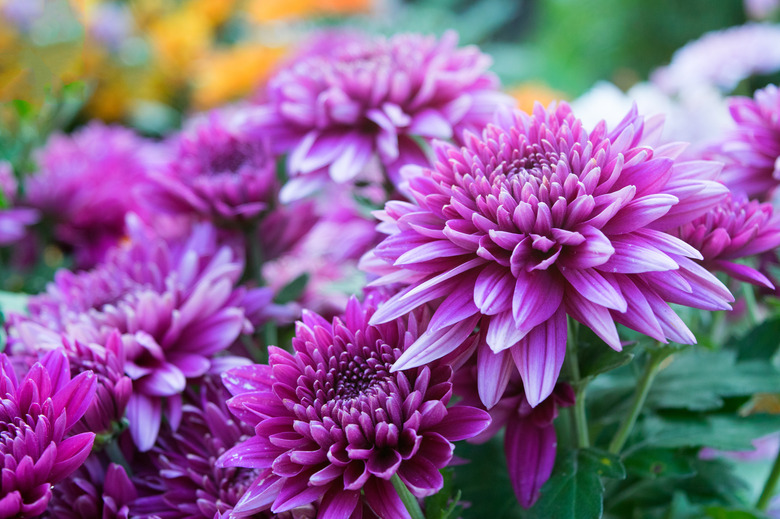Why Mum Blooms Turn Brown
Mums (Chrysanthemum spp., USDA zones 4-9) add color to your garden in fall when many other flowering plants are beginning to succumb to the cooler temperatures, but if your mum blooms are turning brown along with your other plants, you may need to change your mum care. Mum blooms brown after the blooms are spent. If your mums are browning early, they may be blooming too early. Another cause is an early hard frost.
Why Do Mums Turn Brown?
The perfect mum starts to flower in late summer to early fall, depending on type, and the blooms should last six to eight weeks. These tightly packed flowering plants provide oranges, bronzes, yellows, maroons and lavenders that brighten your garden as the days get shorter and cooler.
Even if you plant your mums in early fall, the blooms should last six to eight weeks. However, an early hard frost where the temperature drops below 28 degrees for at least four hours can cause your blooms to turn brown. If you know this frost is coming, cover your blooms to protect them from the frost.
Mum blooms can also turn brown when they flower too early or if they are not deadheaded. If you deadhead your mums as soon as the flowers are spent, your plant will have more energy to keep the color in existing blooms.
Care Needed for Blooming
If you planted your mums in spring or if you overwintered your mums, they will start to develop buds in late spring. These mums will flower early, so pinch the growing tips of stems with your thumb and forefinger every two to four weeks until early July. That will ensure your mum plants have thicker growth and will bloom in early fall, giving the blooms the best chance to survive for six to eight weeks.
For ideal blooming, mums need six to eight hours of sunlight a day. Mums that don't get enough sunlight will produce leggy stems and fewer blooms. Even if you wait until early fall to plant your mums, do not let them wilt. Once the plants are established, proper care includes providing an inch of water each week. Thoroughly water the roots but avoid soaking the foliage.
Make sure your mums are planted in well-draining soil. Mums don't do well in soggy soil or standing water. Once your mums are blooming, watch for spent blooms and deadhead them using your thumb and forefinger or a small pair of gardening clippers.
Winterize Your Mums
For best results, garden mums should be planted in spring, but people start thinking about mums in the fall, when they show up at garden centers. As long as you follow a few steps, your garden mums will give you nice color in the fall and will continue to bloom in autumns to come.
First, resist the temptation to cut your mums to the ground after a hard frost. Mums will better survive winter if you leave the old stems alone until spring. Next, provide up to 4 inches of shredded hardwood mulch or straw around the base of the plant.
In spring, when you start to see new shoots, use garden clippers to prune the old stems. Clear away the mulch from the shoots and use an organic plant fertilizer once a month. Pinch the early growing buds every few weeks until early July, and the mums should provide your garden with color come fall.
